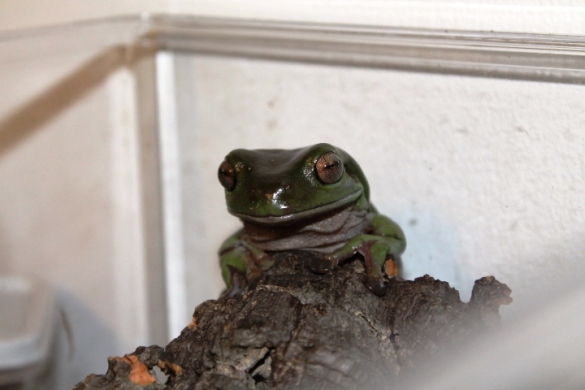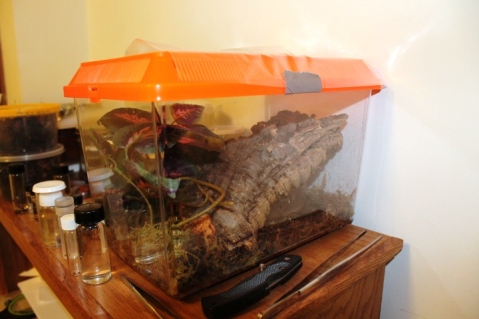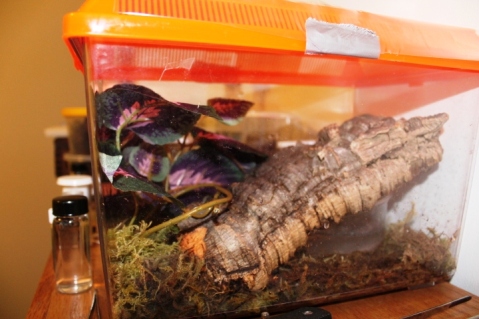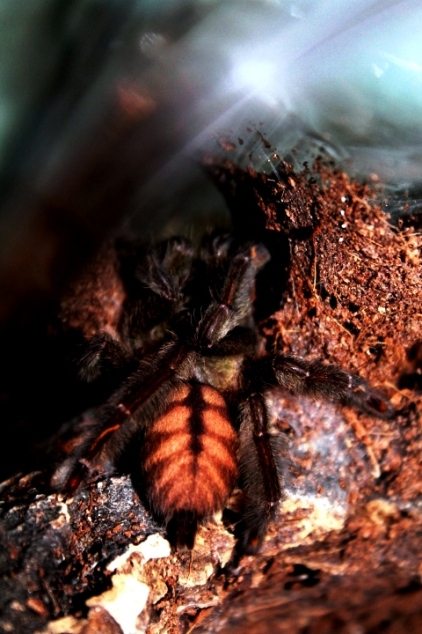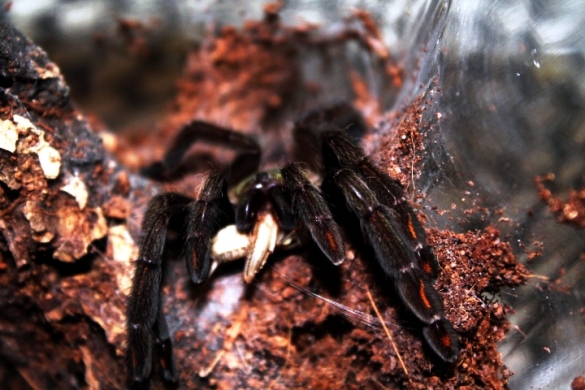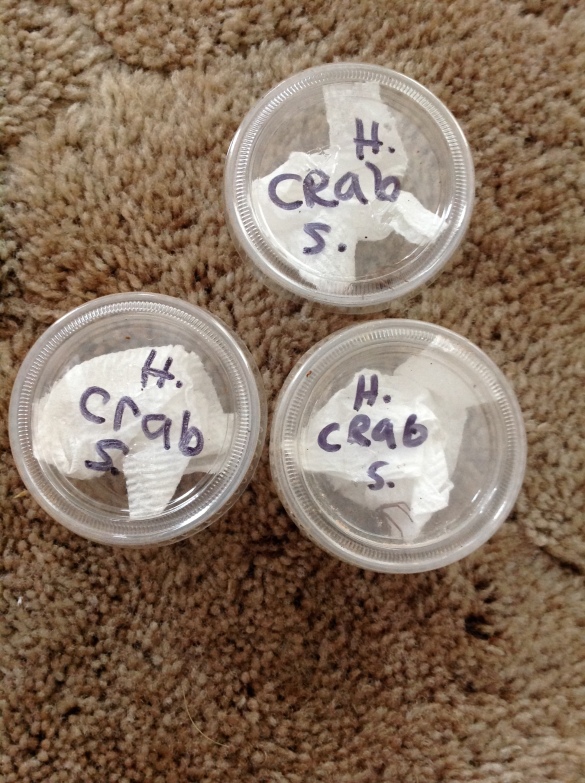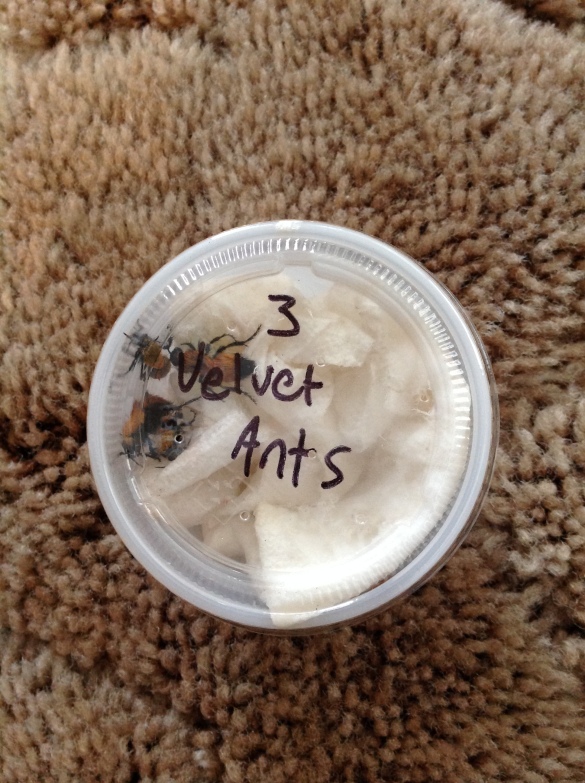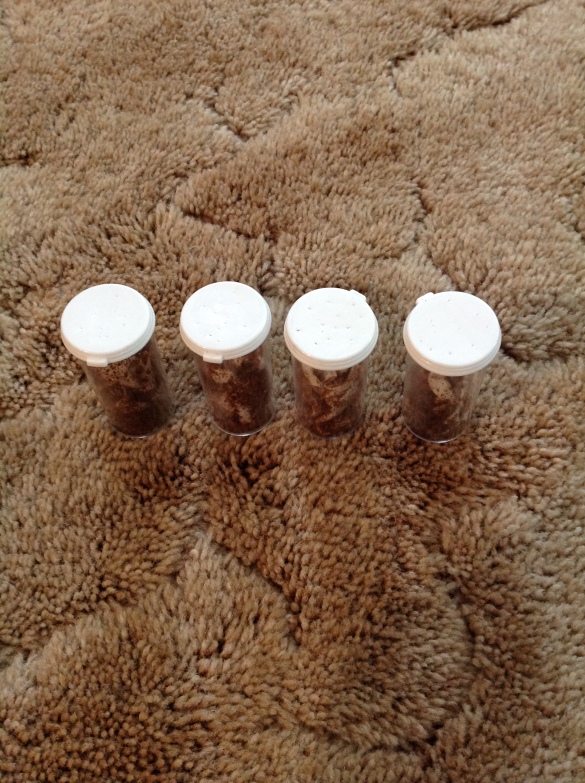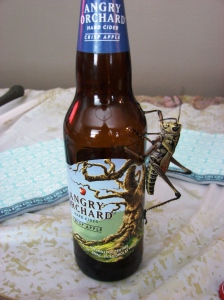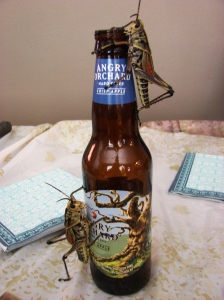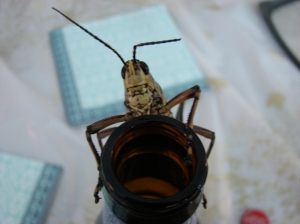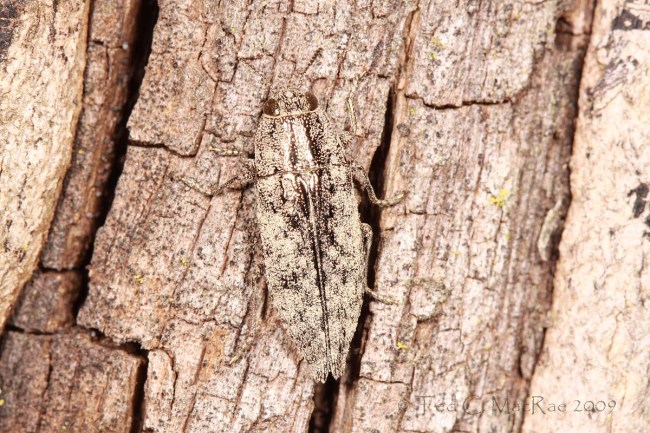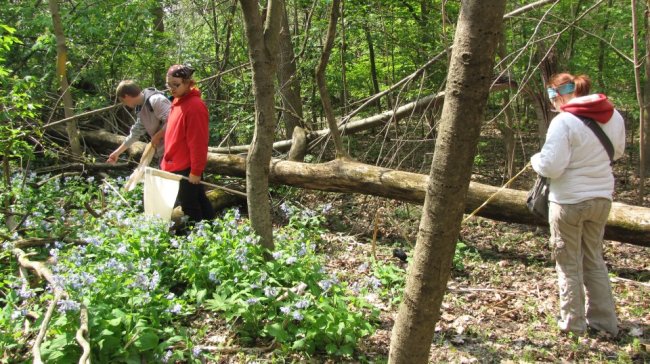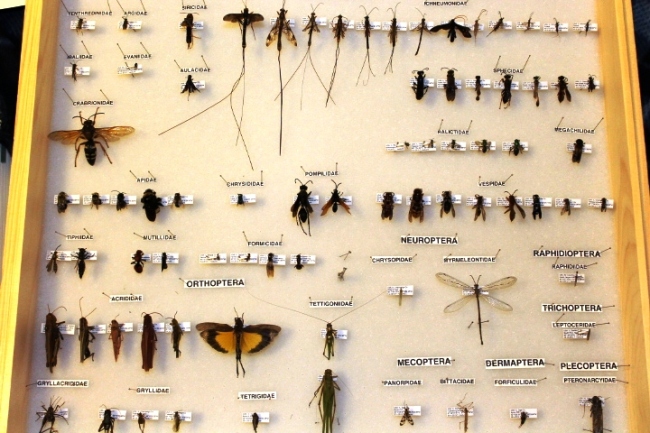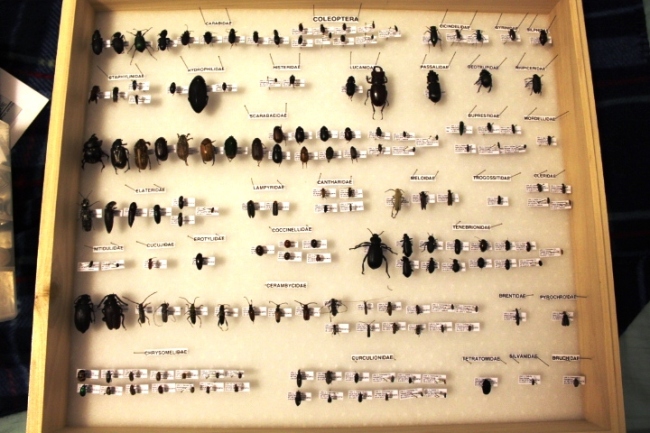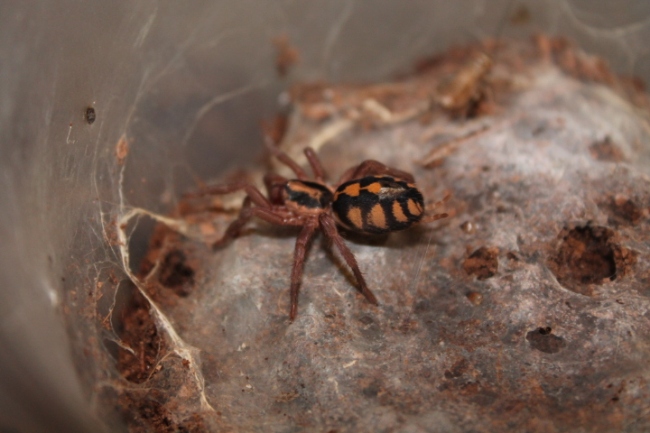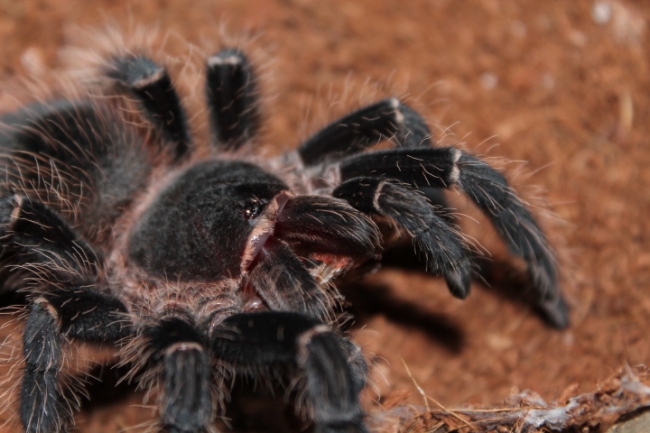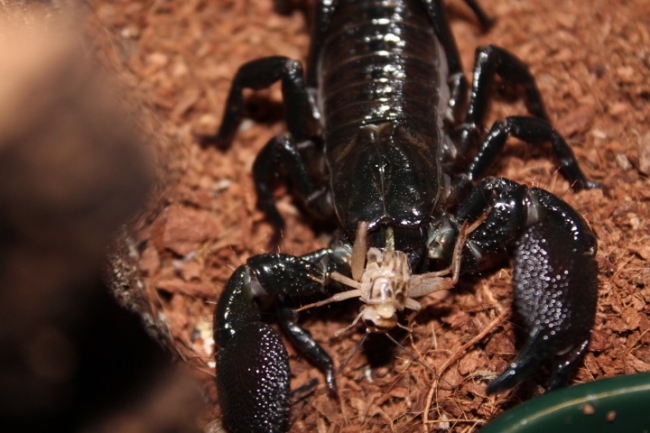The Mystery Revealed!
Last post, I tried to make a guessing game out of the new pet that I got. Thank you for those that guessed verbally, and those that had their mental guesses! But now the time has come for the revealing!
And my new pet is….
I know, it’s odd for me to have a vertebrate pet, but I’ve wanted a frog of some sort for a while now and I figured this would be a great chance. He (?) has already made himself very much at home and has voraciously devoured any crickets that I drop in. When it comes to activity, he really just likes to sit around during the day, but at night he emerges and crawls everywhere (though the water bowl is definitely a favorite spot). Since he’s an amphibian, handling should be kept to a minimal due to his very permeable skin, but when I have taken him out, he is very docile and seems to just enjoy sitting. Or feel adventurous and try to go up my arm.
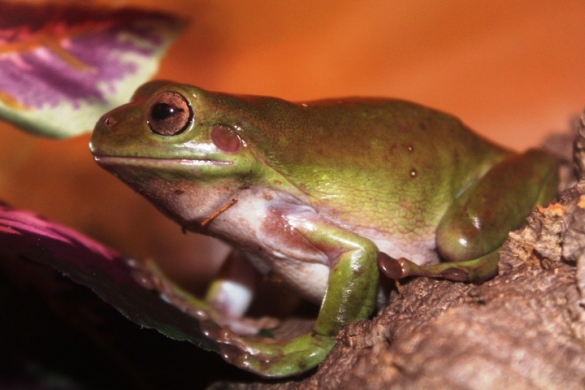 They are supposed to be long-lived (~15-20 years), so I’m looking forward to having this guy for a long, long time!
They are supposed to be long-lived (~15-20 years), so I’m looking forward to having this guy for a long, long time!
More info on caring for Whites tree frogs can be found here in case you want to get a frog of your own!
Mysterious New Addition
This past weekend, the local pet store, Sailfin, had a 25% off sale on reptiles, amphibians, and arachnids. Never one to miss a sale like this, I made my way over there, along with a friend who was also very interested on getting a good deal. We entered the store and made a beeline for the back room where they kept everything not fish related.
My friend and I had actually been in a couple days before that to pick up crickets, but we decided to wait to get those along with whatever new creature(s) that caught our eye. There were no new tarantulas unfortunately, but the ones that were still there were going for such a great price that they were hard to pass up. All of the reptiles and amphibians looked happy and healthy as always, and the warm-blooded fuzzy things on the shelves behind us were active as ever.
One thing I had noticed last time I was there was that one of the tarantulas, a Costa Rican orangemouth (Psalmopoeus reduncas) looked mature, so I made sure to mention that to one of the workers. He had thought that as well, so he went back and got the enclosure so that we could have a closer look. Lifting up the spider’s corkbark caused it to go running everywhere. Let me tell you, I wasn’t expecting it to be that fast (though I guess that gives me something to look forward to when my P. irminia (Venezuelan suntiger) gets older). We were easily able to confirm it was a mature male, it didn’t get out, and the fearful trio waiting in the doorway with dinner plate sized eyes now have a great story to tell their friends.
None of this really tells you what I got though, does it? Well, I’m going to wait for a day or two before I reveal what it is. But here are a couple pictures in get the guesses going!
Feel free to post your guesses in the comments section below, or on the Facebook page here. Happy guessing!
Tarantula Tuesday: Venezuelan Suntiger
It has been a while since I did a Tarantula Tuesday post, so this is going to be a fun one (yes, it is still technically Tuesday here in the now frozen Midwest). I recently got lucky enough to see my Venezuelan suntiger (Psasmopoeus irminia), Labyrinth, out and about. Not wasting any time, I grabbed my camera and managed to get some shots. As always, he(?) ran right back down into his tunnel. I wasn’t going to be robbed of my photos though, and since it was a feeding day, I grabbed a cricket and lured him back out with the prospect of food. But seeing as he’s a P. irminia, he decided to teleport out of his tunnel to grab the hapless cricket. It can be a bit startling if you aren’t ready, but I’ve gotten used to his tricks. I initially didn’t let go, so he stayed at the tunnel entrance, allowing me to snap a few more photos before returning to the depths.
Sequence of events:
Hopefully I’ll be able to get some better shots of him in the future. Hoping he turns out to be a she, but it’s hard to tell when I can’t get a close-up ventral shot and he shreds all his molts.
As far as care goes, the P. irminia is pretty easy and is considered by many tarantula keepers as the last arboreal stepping stone before keeping ornamentals (Poecilotheria spp.). As slings, they tend to do what they want. Sometimes they act like arboreals and build a nice vertical web tunnel on the side of the enclosure. Or they act like mine and live underground. It doesn’t mean anything is wrong with him; he’s just doing what he wants.
They need to be watered a bit more frequently, but a couple times a week is still adequate. As long as the substrate doesn’t get bone dry for a long period of time (couple weeks), everything should be fine.
And finally, as the name states, the Venezuelan suntiger is a New World species. So the venom isn’t bad, though they tend to have an attitude problem if you annoy them. One of the more fun things they can do though can be found here. That’s right, they can shoot their frass. Quite far at that. And that’s why we love our New World arboreals. =)
Bugs In Cyberspace Review
Recently I got a package from a very good seller, Peter Clausen, owner of the website, Bugs in Cyberspace. I’ve gotten invertebrates from Peter before and have never been disappointed. I was super excited about this because Peter was going to send me some inverts that had been on my wish list for quite a while. The package was filled to the top with cups and vials holding my now prized inverts, seen below.
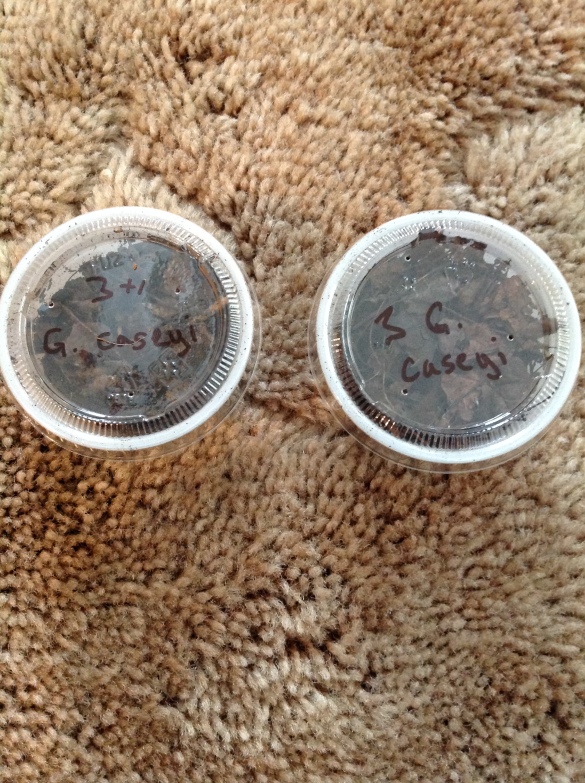
Seven harlequin beetle larvae (Gymnetis caseyi). Adults can be seen here
There were also two warty glowspot roaches (Lucihormetica verrucosa), but I didn’t get pictures. Despite these being sent when it was wickedly cold, all but two things survived. This is a tribute to the amazing packing job that Peter did. He is a credit to the invertebrate hobby and someone that I will continue to do business with in the future. If you want some interesting invertebrate pets, he’s the best person to go to, hands down.
Lub is in the Air
It has become a bit of a tradition for me to bring insects of some sort to Christmas (my little cousin loves them). So this year, I brought along a couple of lubber grasshoppers (Family Romaleidae) for everyone’s enjoyment. I borrowed them from the University of Illinois Urbana-Champaign insectary so I could do a bit of outreach while home on winter break.
As I enjoyed a drink, I was asked to get one of the lubbers out. I grabbed the male since he was a bit more active and let him crawl around on me. For some reason, he decided he had had enough of my hand and awkwardly hopped to the table. From there, he proceeded to climb right up my drink and relax on top.
Turns out he’s quite the climber. But why stop there? I picked the female out of the enclosure and put her on the table as well. It didn’t take her long before she found the bottle and started climbing up.
Once they both got to the top, they stopped moving and just sat, content to be at the highest point (or they were feeling a bit tipsy since the male fell off a few minutes later). After a few minutes of their antics, I returned the lubbers to their enclosure, with a Christmas feast of broccoli and lettuce.
Closing Out 2013
Another year has passed by and boy, has it been a crazy one. I was fortunate enough to get to travel extensively and collect everywhere I went. Photography will be a fun hobby to further pursue as I learn more about taking good pictures and I’m sure I will be able to snap some pretty sweet shots of insects and other natural wonders.
Seeing as my blog is pretty fresh (I only started in October, after all), I can’t really give you a summary of the year, but I can give you the promise that 2014 will have several fun posts that will undoubtedly contain stories, updates, and just all around good buggy times. To 2014!
Tarantula Tuesday (Long Overdue): Brazilian Dwarf Blue Beauty
I have been remiss in giving you all the 8-legged goodness you want, so this week I’m going to feature a species that just recently came over to the United States and was actually only classified in 2009. This amazing species is known as the Brazilian dwarf blue beauty, Oligoxystre diamantinensis.
This colorful dwarf species is easy to care for, with humidity requirements above 50% and temperatures in the 70’s F being enough to keep it happy. This simple care is offset though by their attitude and the hefty price tag. Slings (spiderlings) less than 1 inch (2.5 cm) have been going for upwards of $100 very easily. Hopefully the prices will drop as they become more common due to breeding efforts by dedicated individuals. Despite not growing much larger than 4 inches (10 cm), these spiders are vicious predators, being able to take down prey as large as they are.
Being so new to the U.S., there isn’t too much information on them yet, but the simple care means that this is another easy tarantula to keep and care for.
I know this one is on my wish list!
Winter Brings Dreams of Collecting
As the snow continues to fall here in central Illinois, all I can think of is going out and collecting again. The beetles I hunt for have all gone to ground and will stay there until it begins to warm up again. I’ve even been having dreams of collecting the past couple nights, though those could be due to me spending large amounts of time on Ted MacRae’s extremely informative blog, Beetles in the Bush, especially on his posts about jewel beetles (Family Buprestidae).
Last night’s dream had me wandering along the edge of a wooded area and finding a tree that had been knocked down recently. As I excitedly walked up to the tree, I found dozens of species of buprestids! Realistically this would never happen, but a guy can dream, right?
Besides all this dreaming, I’ve begun planning for what is looking to be one heck of a field/collecting season. BugGuide has been my friend as always in helping me make up a wish list of species that I’m hoping to collect and showing me where they can be found. The next steps will involve finding places to collect at and figure out what trees I should be looking for. I will likely be confined to the Midwest for most of the season, but I may be able to swing down to the Southwest in the spring (fingers crossed!).
And finally, because I can’t leave you all without a picture of some sort, here is a picture from Ted MacRae of the beautifully cryptic buprestid, Dicerca obscura.
When a Collection Comes Together
I’m an avid insect collector. As soon as it starts getting warm, I run out into the woods with my net and backpack of vials and other miscellaneous items. It’s always an enjoyable excuse to get out into nature to get some fresh air.

Though things can go wrong when you sink into water that goes over your boot tops (photo courtesy of Ellie Moen)
It really gets fun when my fellow entomophiles join me in the woods and we can really get the collecting going. We all catch interesting insects and trades undoubtedly occur as people catch insects from certain highly sought after families.
As a graduate student, I just finished taking an insect taxonomy course, and one of the course requirements was that I make an insect collection. Considering that I had been collecting insects and putting them in my freezer for two years, I was pretty set. The issue was that I hadn’t really pinned up all that much yet (and don’t even get me started on labeling…). But I knew I had to do it and I knew that I was going to enjoy it.
After spending innumerable hours working on it, I was finally able to turn in my collection. I did go a bit over what the requirements were, but I was just trying to empty my freezer and get things pinned up. And here it is:
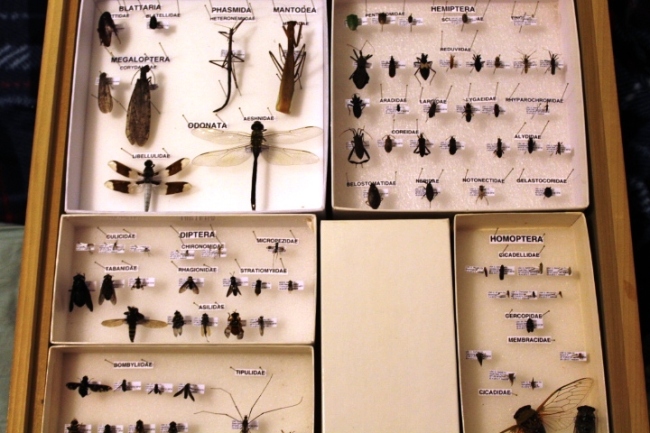
Box #2, containing assorted orders. Homoptera is no longer an accepted order name, but it was permissible for this class’ collection
And saving best for last…
And as an added bonus, my freezer is now almost completely devoid of insects (which my roommate is super happy about)!
New Camera!
So I’m very excited to say that I got a new camera recently. I have been using a simple point-and-shoot for the last 5 years and I wanted to mix things up and get a good camera. After talking with several people about it, I decided to get the Canon Rebel T3. I’m looking forward to taking insect/arachnid pictures this next year once winter decides to call it quits.
It’s going to take some getting used to, but I’m eventually hoping to take some high quality photos (like what you see here and here). For now, I’m reading everything I can and taking lots of pictures of tarantulas and other arachnids to test things out.
Here are a few other photos!
I’m sure major photo gurus are cringing at some of my photos, but it will get better. All it takes is practice and reading, which is true of just about anything in life.
